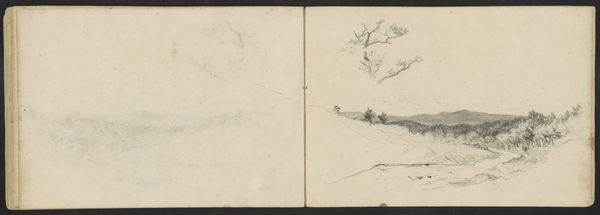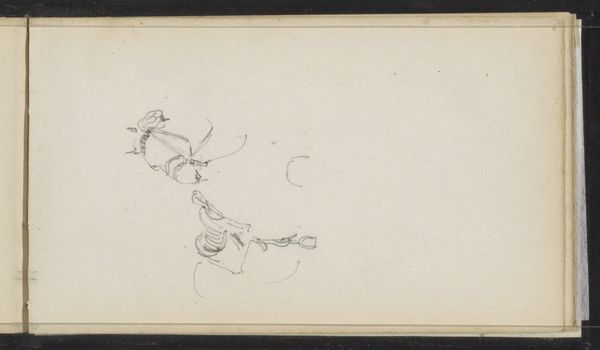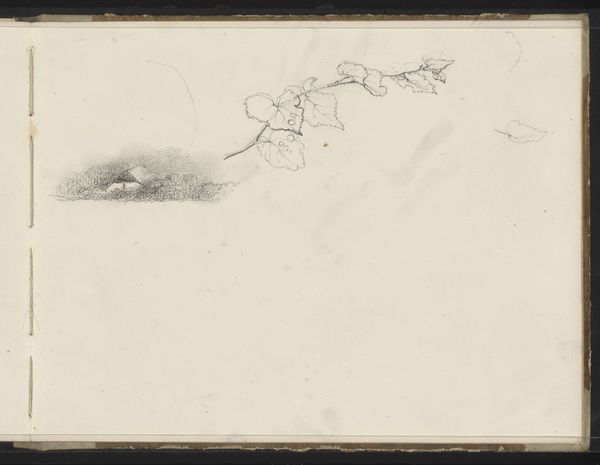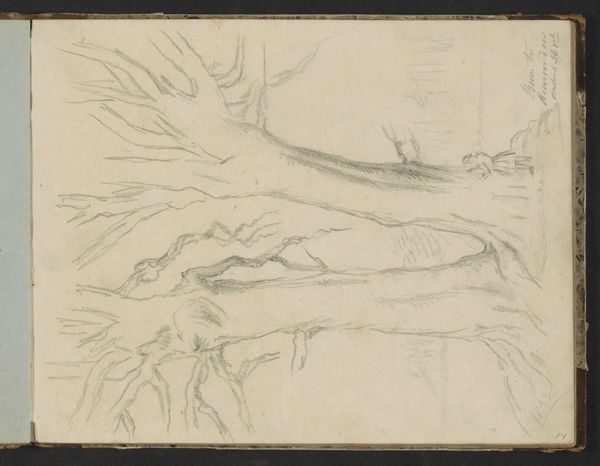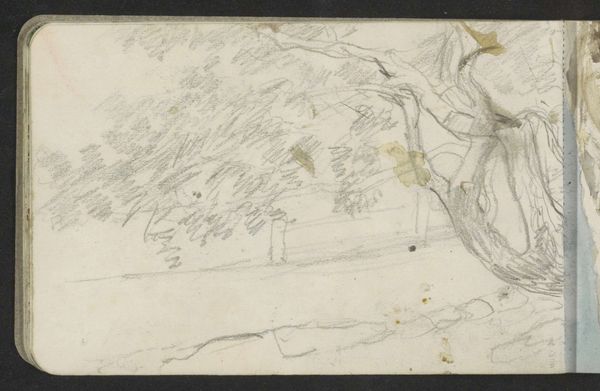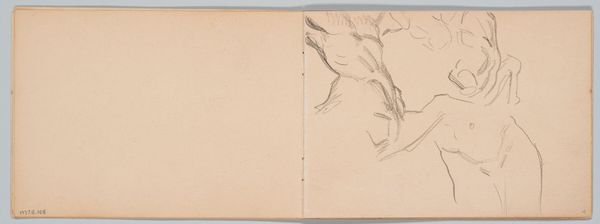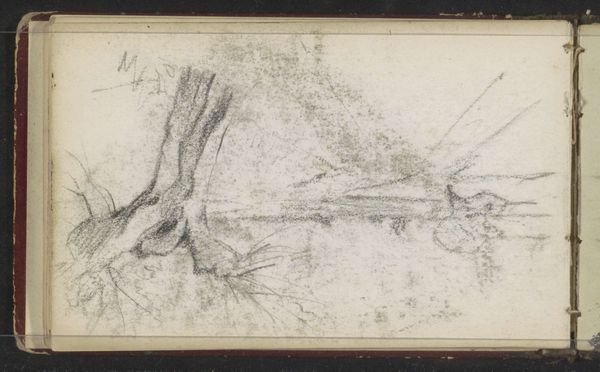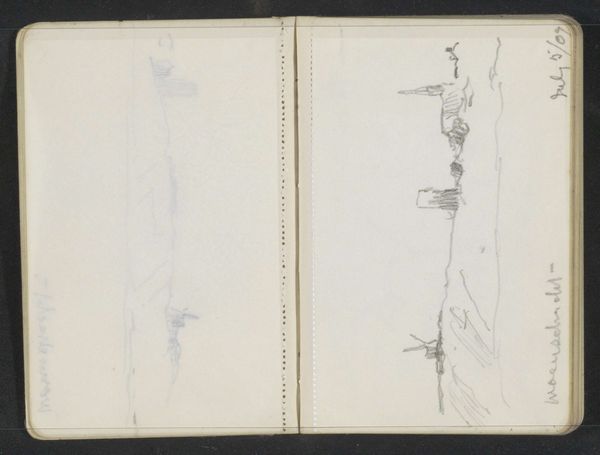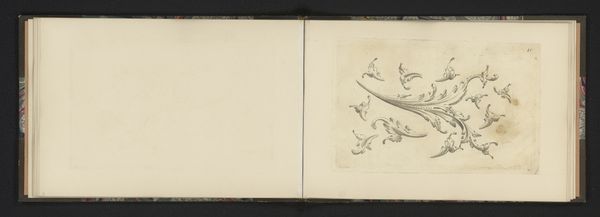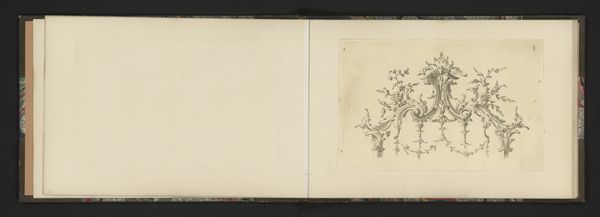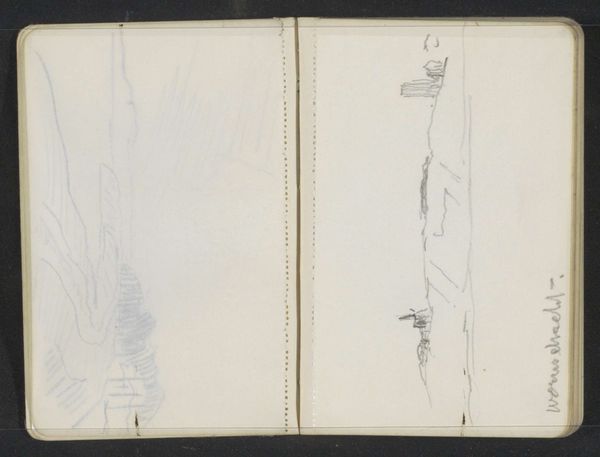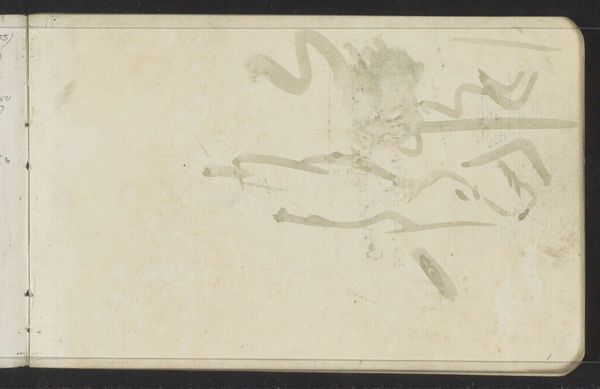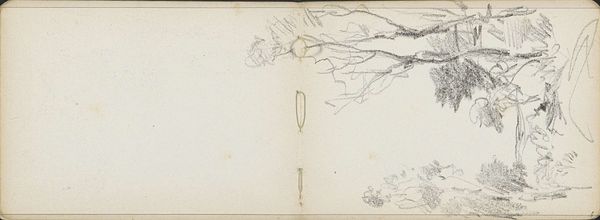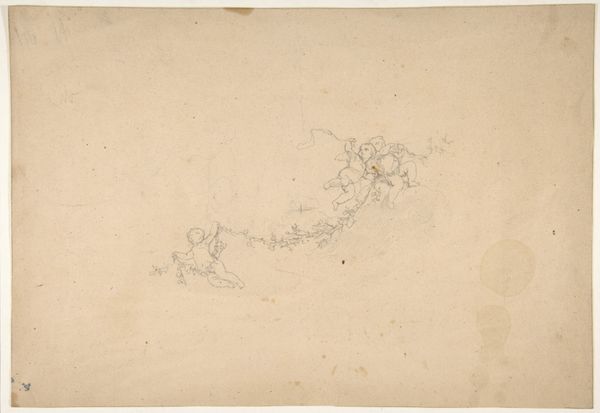
Copyright: Rijks Museum: Open Domain
Curator: Look at this fascinating work titled "Omgevallen boomtak" or "Fallen Tree Branch" created by Maria Vos sometime between 1834 and 1906. What is your first reaction? Editor: Utter desolation. I'm immediately struck by its skeletal sparseness, a bone-like scattering of lines on the right page of what appears to be a sketchbook, opposed to nothing on the left, an empty plane of loss. Curator: Exactly! Vos really captured the romantic idea of nature in ruin here. Consider the materiality of it though, just humble pencil and ink on paper. It shows us her process and immediate connection with nature. The drawing becomes more about labor and less about some highfalutin ideal. Editor: Ah, I can agree to disagree... Isn't the choice of delicate pencil strokes a conscious one, a decision meant to mirror the fragility of life itself? It speaks to the transient, romantic perception of a world perpetually in decline. This choice of material emphasizes emotionality rather than labor. The subject on the right, balanced by its own absence on the left is the key! Curator: Absence certainly plays a key role in evoking melancholy. Consider it in terms of artistic practice, Maria's notebook may have been an ordinary thing of bound paper; the source may have been commonplace graphite, readily procured and applied by hands toughened by daily drawing. The artist elevated her humble experience! The production value becomes integral! Editor: I hear your pragmatic heart beating, yet I still interpret this piece through a more personal lens. Isn’t art about infusing everyday materials with extraordinary meaning? These fragmented lines, dancing between stark realism and gentle suggestion, capture that singular moment of confronting mortality. And I believe that makes it incredibly impactful. Curator: Indeed! In her close study of an organic form with modest materials, she makes visible a particular perspective about process and place within a landscape and time. Thanks for bringing my attention to it, it brings even more to light how important a role materiality plays in reading imagery! Editor: And thank you for pushing me to examine my initial emotive reactions more critically and acknowledge that connection! There is always more to these images when we consider our different viewpoints, the final reading is just an interaction of two unique viewpoints meeting at an apex!
Comments
No comments
Be the first to comment and join the conversation on the ultimate creative platform.
